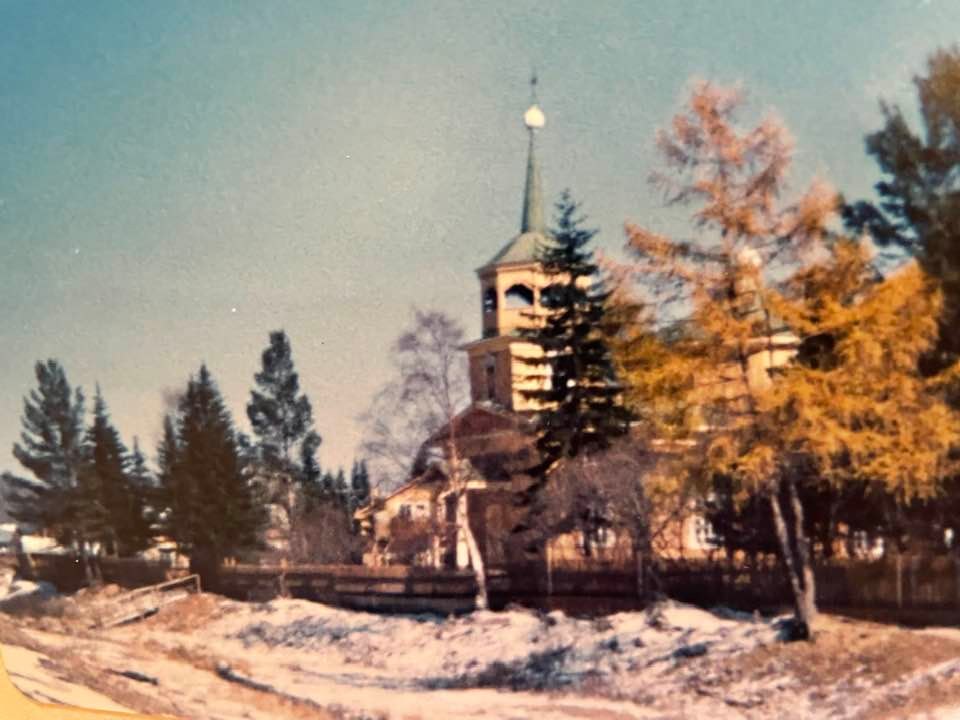MAY 13, 2022 – After a protracted account of the scenery inside the Trans-Siberian train, it’s time to detrain for a bit to visit grounds beyond the railway. As mentioned earlier, I’d scheduled an interruption of the eastward journey with a stop in Irkutsk, by far the most sizable settlement within a very long radius of the foot of Lake Baikal.
My accommodations there were at a comfortable hotel with a serviceable restaurant where I took breakfast and dinner. The restaurant is the single and improbable place throughout my travels in the Communist world where I used my Visa credit card. At one dinner I was joined by an American micro-economist who worked for a private concern, based in Princeton, NJ, that had been retained by the Soviets to study some aspect of manufacturing in the USSR. It struck me as a highly improbable engagement, and therefore, a fascinating one. I don’t remember the economist’s explanation of how his firm had won the contract, but I do remember his assessment of the Soviet economy, viz. “It’s hopelessly screwed up”—an indictment that was hardly surprising, given my own observations.
I remember vividly, two other things about my sojourn in Irkutsk: 1. The ice cream, and 2. An image of Stalin. If the vast majority of Soviet consumer products were distinctly inferior to their Western counterparts, one exception was ice cream—the central planners and their delegatees certainly knew how to make the world’s best and distribute it via sidewalk vendors—even in winter conditions. Perhaps history would’ve taken a better course if the Cold War had been about chocolate vs. vanilla ice cream instead of . . . communism vs. capitalism.
Stalin’s image, framed in fringe and prominently displayed inside the front of a city bus, threw me for a loop. I’d assumed that Russians held the “Man of Steel” in as much contempt as most contemporary Germans would regard Der Fuhrer. At least Stalin’s mug didn’t make it into my grade school primer souvenir (See post of 5/7/22).
My main objective in Irkutsk was to find my way out of the city to a representative Siberian village, and to dip my toe—figuratively; winter had definitively descended upon the region—the waters of Lake Baikal. By a tired old bus, I found my way to Listvyanka, a hamlet of a few hundred souls, within an easy ride of Irkutsk.
In my letter home, I described the highlight of the side trip:
“On the same gorgeous day I visited a small Siberian village named Listvyanka. There I managed to get inside the village landmark, a quaint Russian Orthodox Church, which, unlike so many other churches in the USSR is still used for worship. Beautiful icons adorned the walls of the simple but attractive interior. The attendant was a frail, diminutive woman whose age was hard to tell. She wore a black overcoat and matching scarf, neither of which seemed sufficient against the Siberian air. Her nose was pink from winter’s breath, but otherwise the woman’s face lacked color. Her small, round, brown eyes reflected peace and humility. She spoke with a high, thin voice, iced over by a life in that cold Siberian village. She gave me some candles to light, and after struggling through a few phrases in Russian, I left the woman, the church, and . . . the atmosphere of a Dostoyevsky novel.”
I also walked up and down the dirt streets of the village to observe local life. When a young girl riding a bicycle saw me, she reacted as though I was from Mars. Yet from my perspective, she was the one living on Mars.
(Remember to subscribe to this blog and receive notifications of new posts by email.)
© 2022 by Eric Nilsson
